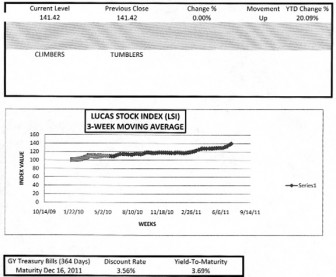Aggressive Spending
In articulating the national competitive strategy, there is no doubt that a major focus of the administration was expanding the export activity of Guyana. The pursuit of this objective would be reflected in the actions taken by the administration to create opportunities for success. That success would show up in the growth in export volume and in a rebalancing of the share of revenues earned by traditional and non-traditional exports. Where Guyana is today by the numbers would not convince many that the market diversification efforts could be regarded as successful. While volume data is currently unavailable to this writer, the value of non-traditional exports in total exports is not impressive. In 2006, non-traditional exports accounted for seven percent of export revenues. The share was the same in 2010. Much more alarming, though, is that the share of export revenues from non-traditional exports is no greater than it was in 2001, even though there has been aggressive spending on improving Guyana’s competitiveness since 2006.
Positive Direction
To be fair, there has been some increase in exports of non-traditional products. A review of export statistics in the annual report of the Bank of Guyana indicates that Guyana has added one category of exports to its non-traditional list since 2006. In 2008, beverages started showing up in the export statistics of Guyana. This implies that the trade is significant enough to warrant mention in the official statistics on exports. However, the export trade in beverages still remains small relative to all others. In 2010, revenues from trade in beverages made up less than half of one percent of total export revenues.
Revenues
The second positive development of the export diversification programme is the growth in revenues from the sale of non-traditional agricultural products, especially fruits and vegetables. Trade in these commodities brings in about US$3 million per year, growing from US$1 million in 2001 to US$ 5 million in 2010. The contribution of fruits and vegetables also represents less than half of one percent of total exports even though the trade brings in about six percent of the revenues of the non-traditional exports. Within the last three years, the revenues from the export of prepared foods also have grown phenomenally. In 2006, Guyana earned about US$6 million in revenues from this non-traditional export. By the end of last year, prepared foods were earning as much as US$17 million, a near 200 percent increase in revenues.
Other transactions that involve the sale of nibbi-furniture, wildlife and handicrafts have also shown significant growth. Revenues from these items have also gone from single digits in 2006 to double digits in 2010.
Incentives and Special Action
But the movement referred to above might not represent a likely sustainable trend, nor does it offer any assurance that the framework in which the export diversification effort is being pursued is one in which investors could place unconditional faith. The programme for expanding exports is based on a series of incentives and special actions that are provided through GO-INVEST, the New Guyana Marketing Corporation (GMC) and the Forestry Products Marketing Council (FPMC). These various initiatives have been in place for varying periods, but might not be producing the desired effect, causing the proportional revenue contribution to stagnate.
GO-INVEST and GMC have been around for decades while the FPMC came into existence in 2005. A major input into the process is the Trade Point Guyana service, an online marketing tool that connects local suppliers with potential buyers, especially foreign buyers. Trade Point Guyana is connected to the World Trade Point Federation (WTPF), a trade promotion network of the United Nations. Guyana’s use of this facility started around 2009 and there is no public assessment of its impact on the trade in non-traditional commodities.
Weaknesses
Despite these developments, identified constraints and weaknesses in the support mechanism for export diversification might still be around. Revenues from garments and clothing have fallen considerably. Pharmaceuticals have shown no growth and revenues from wood products are flat. The administration acknowledges that the three agencies above lack the operational capacity to make the export diversification programme work as well as it could. In addition, the supply chain management is still weak and creates problems for producers, particularly those in agriculture. Efforts to expand the trade have also encountered policies that undermine competition. For example, the administration admits that the export tax policy discriminates against some private sector operators. With no indication that the problems have been fixed, the administration also admits that some aspects of the export diversification policy are hurting implementation of the strategy.
Stagnating Share
Even as Guyanese await further information on the efficacy of the strategy, the stagnating share of revenues suggests that the many problems identified by the administration have not continue to affect production and sales adversely. Under such circumstances, non-traditional exports will continue to struggle for a prominent place in the Guyana economy.
ECONOMICS AND FINANCE
LUCAS STOCK INDEX (LSI)
WEEK 2 JULY 2011










